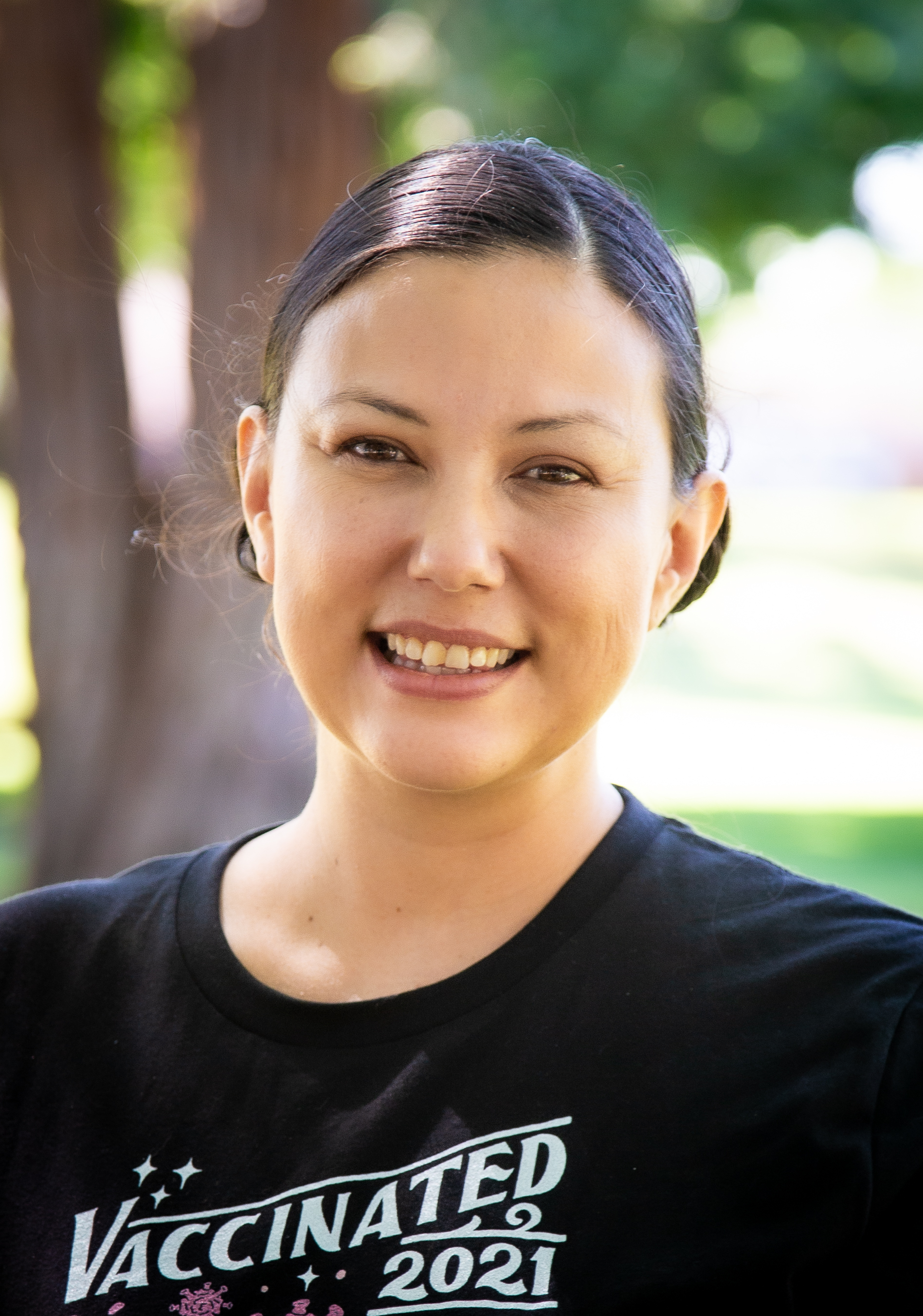Support Page Content
Achievements In the CSUS Stem Cell Program, 2021
About Our Stem Cell Graduate Research
Master's students in our Stem Cell Program perform cutting edge translational research in the field of regenerative medicine. The intention of this site is to provide a platform for our graduate students to describe their research to the greater community. In some cases, students chose instead to write editorials aimed at providing a general understanding of stem cell research. In all cases, students attempted to describe research in a way that would be consumable and informative — and possibly even entertaining —to all readers.
To protect the confidentiality of unpublished research currently underway at UC Davis, the specific names of genes, proteins, cells, and tissue types have often been replaced with aliases or referred to generically (e.g., "factor X" or "a specific peptide"), unless the information is already publicly available elsewhere.
If you have questions or comments, please contact the site editor: Dr. Kimberly Mulligan.
Previous Accomplishments
It’s Not Magic, it’s Stem Cells!
Judith Anderson

With the wave of their pipettes, what scientists can do with stem cells almost seems like magic. Stem cells are a group of cells characterized by their ability to produce different cell types and unlimitedly self-renew (Figure 1). Think of it as though stem cells are the magician’s hat, and anything can be pulled out of their hat. Anything can come from that hat based on the tricks, wands used, and the magician. In this scenario, all the tricks and factors influencing what the hat produces are equivalent to the stem cells’ micro-environment. Their micro-environment is often referred to as the stem cell niche. In different stem cell niches, surrounding cell groups and molecules influence what the stem cells will produce. The niche will also instruct the stem cells on when and how they’ll divide.
It’s Not ALL in the Genes: The Epigenetics of Neuropsychiatric Disorders
Yasmine Arafa

You’ve probably heard the term “epigenetics” somewhere, but what is epigenetics anyway? Epigenetics is basically the study of changes in gene expression that are NOT caused by changes in the DNA sequence. Epigenetic changes influence how your body reads a gene sequence and can determine whether each gene will be expressed or not. Biologists have even found that we can inherit traits from our parents resulting from epigenetic changes acquired in their lifetimes.
A Heart-y New Stem Cell Therapy That’s Sure to Get Your Blood Pumping
Amanda Bedolla

Have you ever had a sharp pain in your chest and worried that you were having a heart attack? Heart attacks are the leading cause of death in the United States. According to the CDC, one in every four deaths is from a heart attack [1]. That translates to 655,000 Americans that die from heart attacks a year! I don’t know about you, but I definitely struggle with a looming fear that one of my loved ones will be among the many people that suffer this fate. Predicting who might suffer from heart attack can be challenging—individual risk factors vary depending on race, age, lifestyle and genetics [2].
Organs-On-Chips
Chelsea Brown

Think about the complexities of your body. You are made up of many different bits and pieces. Now think of how complex you are inside your body. You have a brain, lungs, a stomach, intestines, a heart, blood vessels, muscles, tendons, bones, etc. Now think about what these are made up of: tissues, cells, molecules, atoms. The Russian nesting dolls that are the complexity of your physiology seem almost endless. The analogy doesn’t quite work though; nesting dolls are all separate, distinct—one fits into another which fits into another. We do have distinct organ systems in our bodies, but everything works together. Each process intertwines so many different systems that it is almost impossible to detangle them. Now imagine something isn’t working properly. How do we get to the bottom of it? We could strap you down to a table, poke, and prod at you and run all kinds of experiments, but that seems a little evil. All to say that there is a need for scientists to create models that can recapitulate the complexities of our bodies to study mechanisms of disease and drug potential. Models are tricky, though—they must be complex enough to accurately model what we see in the human body, but they must also be simple enough to extract relevant information (1).
Can a Cell Transplant Treat Duchenne’s Muscular Dystrophy?
Heather Farjado

What if I told you that a cell transplant could treat a genetic disorder? That’s what’s on the docket for a common genetic condition that causes muscle degeneration. That’s right, I’m talking about a potential breakthrough treatment for Duchenne’s muscular dystrophy (DMD)! DMD is characterized by progressive muscle loss caused by a mutated muscle protein called dystrophin. Normally, dystrophin helps protect the muscle cell during contraction. When dystrophin is mutated in a way that prevents it from functioning, muscles are more prone to damage, and eventually get replaced by tough, fibrous tissue or fat.
The Tourist Trap: Stem Cell Edition
Stephanie Ferreyra

There are more ways to get scammed than you can count, but the worst of them are those that risk your life and health. Every year, thousands of people travel to clinics in hopes of receiving stem cell treatments, many of whom are seeking lifesaving cures for crippling and terminal diseases or to avoid aging. However, what are being advertised as “lifesaving cures” typically provide little improvement and come with high risk of tumors, worsening of current symptoms, major financial impacts, or even death.
How Stem Cells can Combat Age-Related Muscle Loss
Harnoor Gill

Age is more than just a number—it is a collection of numbers. For instance, people over the age of 30 begin to lose as much as three to five percent of their muscle mass per decade (3). This progressive loss of muscle mass due to the aging process is known as sarcopenia and it can be debilitating. Sarcopenia, which eerily means “lack of flesh”, is accompanied by a number of different health risks (7).
Muscle is undoubtedly an important part of our body and daily life. Besides supporting our skeleton, it has the vital role of allowing us to move and do fun things like rollerblade or bake cupcakes. When we lose muscle mass and strength, it can inhibit our daily activities and increase our risk of accidents, such as falls and fractures (1). Sarcopenia can lengthen our hospital stays as well, which leads to prolonged stagnancy and even more muscle decline (4). In addition, sarcopenia can increase risk for chronic diseases such as obesity and diabetes (2).
Stem Cell Therapies: An Avenue for Restoring Vision Loss
Sabina Khan

If you’ve ever gone to the optometrist for an eye exam, your optometrist has probably put you through numerous vision tests. The purpose of these tests is to evaluate your overall eye health and eyesight, as well as to determine whether you’re at risk for any sort of eye diseases that could eventually lead to loss of sight or vision. Numerous people in the United States end up losing their vision as a result of issues with certain components of the eyeball or deterioration of the eye itself due to some type of eye disease. Eye diseases include retinitis pigmentosa (RP), retinal degeneration, macular degeneration, and glaucoma [1].
The eye consists of several major anatomical parts that collectively aid in receiving and processing visual stimuli. These parts include the lens, sclera, cornea, iris, ciliary body, pupil, macula, retina, and optic nerve. In particular, the retina and macula are located toward the back of the eye and play major roles in processing the visual world. The macula is responsible for processing central vision and providing sharpness in clarity—allowing us to see fine details. The retina serves a similar function, in that it receives and processes visual stimuli and light, but it also transmits information about such stimuli to the brain.
You Don’t Need a Plumber to Replace Those Clogged Pipes in Your Body!
Amy Kim

Have you ever had to use a plumber’s snake or chemicals like Draino because the sink is clogged yet again? This is an all too familiar scenario, where we notice that the sink is pooling water and not draining correctly because hair, food, or maybe your kid’s toy is stuck in the pipes. Our blood vessels function similarly to the pipes in our houses. When they operate normally, vessels transport blood throughout the body in order to deliver oxygen and other nutrients, and to remove waste. Vascular disease is the condition that occurs when the network of blood vessels is not working properly thereby causing a lack of blood flow to organs and tissues of the body, similar to clogged pipes [1]. The wide range of vascular diseases that afflict people worldwide include aneurysms, atherosclerosis, blood clots, coronary artery disease, stroke, pulmonary artery disease (PAD), and vasculitis [1]. Depending on the vascular disorder, medical interventions, like pharmaceuticals and surgical procedures to restore normal blood flow, may be possible. Physicians also typically recommend lifestyle changes surrounding diet and exercise. All of these interventions are aimed at unclogging vessels. But what if the vessels are too damaged? In that case, the only effective treatment would be new blood vessels.
Mice may be the Key to a Cure for Huntington's Disease
Tracy Onate

Huntington's disease (HD) is a brain disorder that afflicts approximately 1 in 10,000 individuals in the United States. HD is an autosomal dominant disorder, meaning that it has a fifty percent chance of being passed from parent to child. HD is caused by a defective gene known as the huntingtin gene. This mutated gene produces a version of the huntingin protein that is much larger and stickier than the normal protein, which causes it to build up in the brain cells of people who have HD. As the protein accumulates, the brain atrophies, and the health of the person with HD declines. Symptoms usually appear after the age of thirty and include cognitive decline; psychiatric disorders, such as anxiety and depression; and chorea, a movement disorder characterized by rapid, uncontrollable movements. Unfortunately, there is no cure, and the disease is fatal approximately 10 to 15 years after the onset of symptoms. The current treatments available are palliative and only treat the chorea and psychiatric symptoms. But there is nothing available to slow down or stop the atrophy in the brain [1].